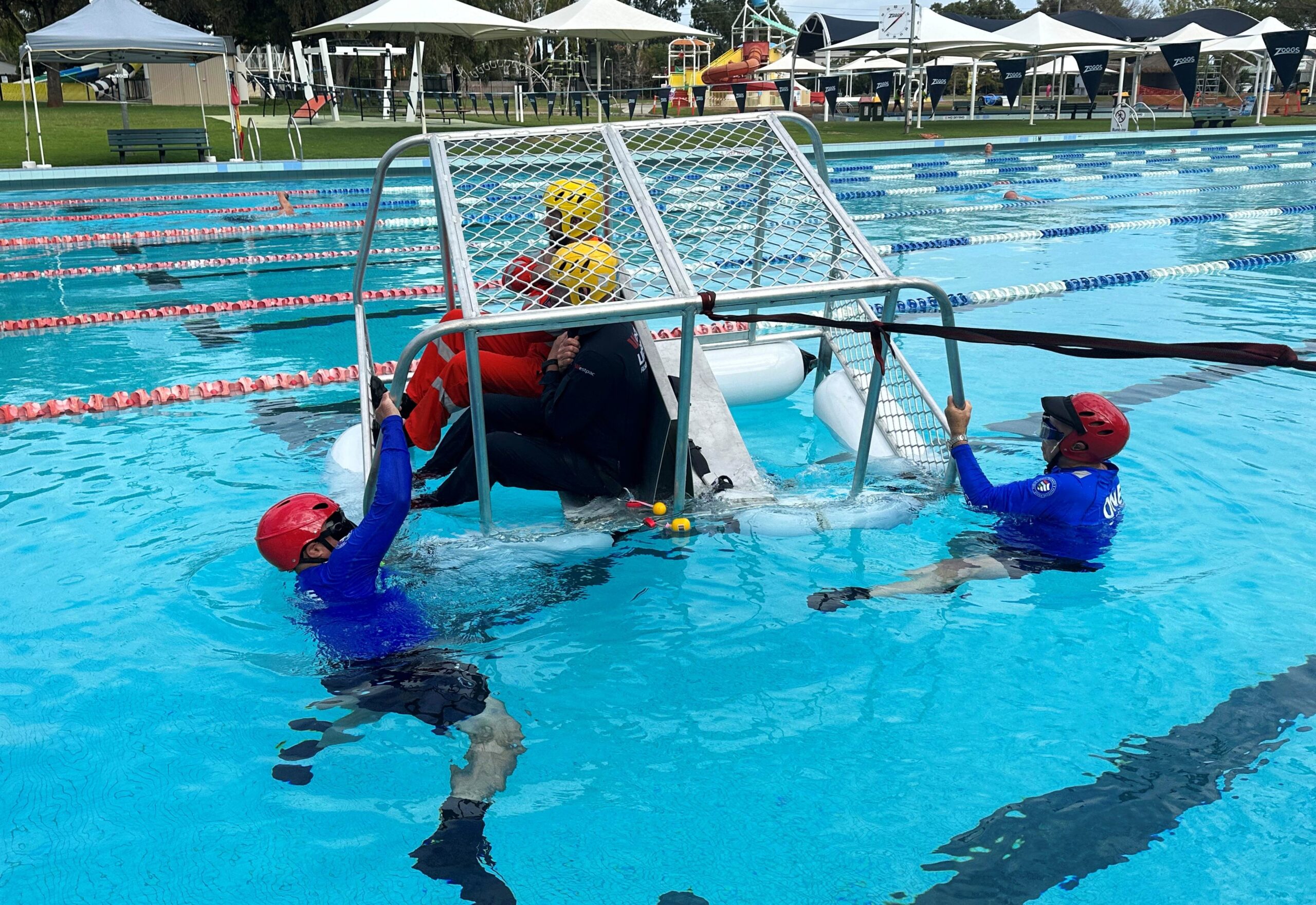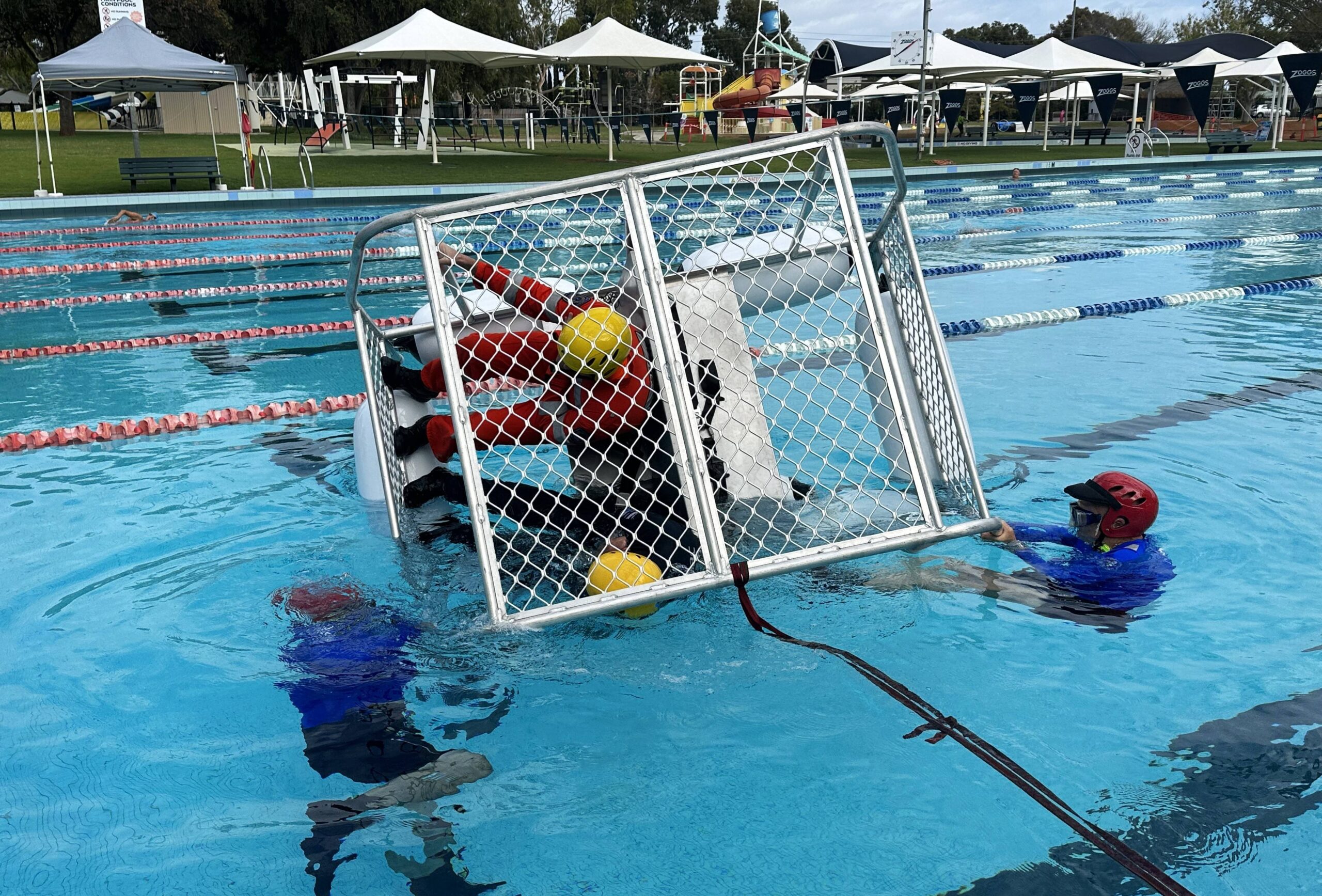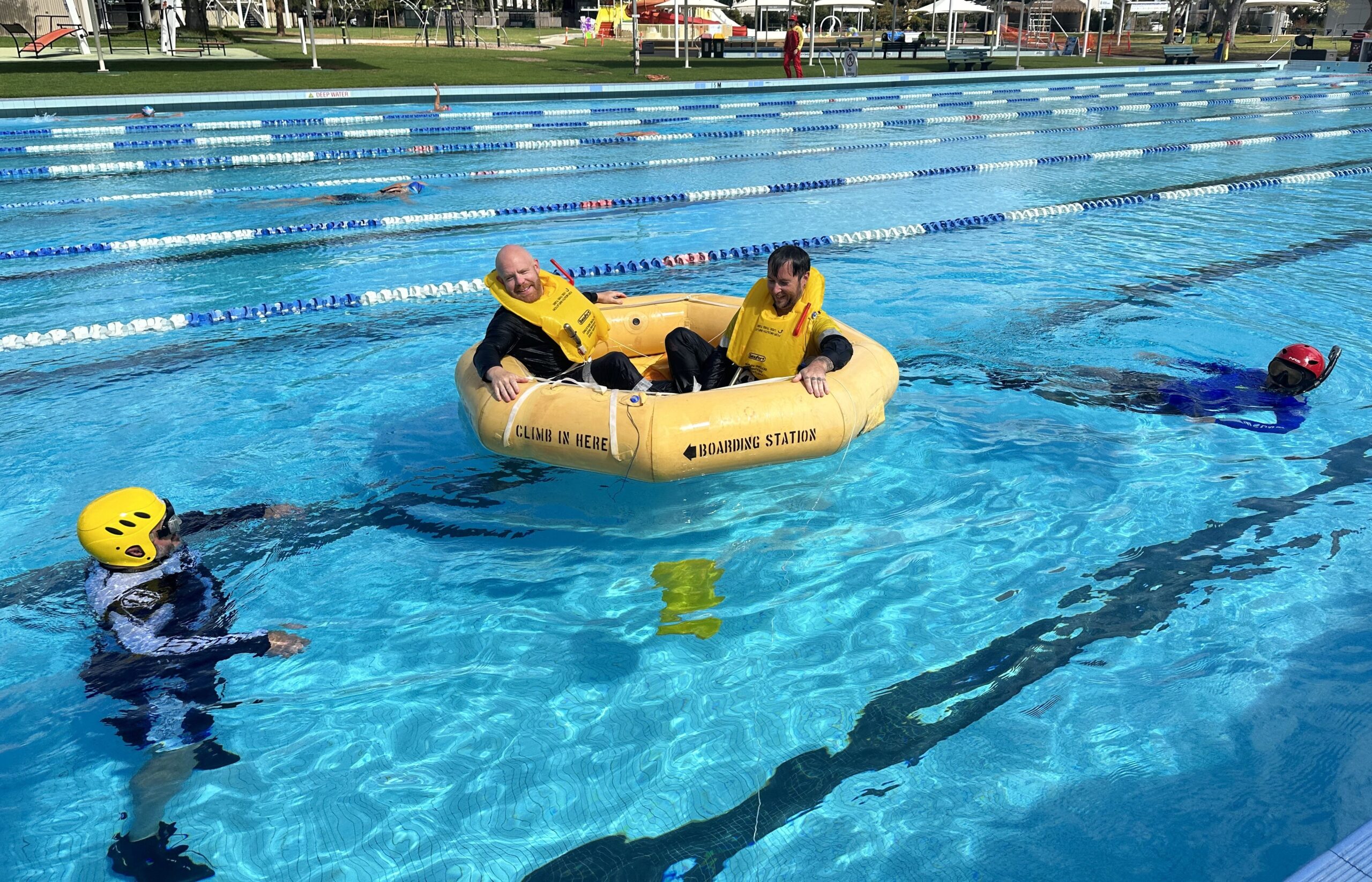The helicopter remains one of the most convenient, impressive and versatile forms of aerial transport for a wide range of tasks, from simple passenger transfers through to highly technical emergency response.
It’s vital that safety precautions – for the machine, its crew and passengers – are strictly maintained and kept up to date.
One key safety element is HUET – Helicopter Underwater Escape Training – a lifesaving skill that is conducted on custom-made equipment by Public Safety Training & Response Group.

“One of the requirements for helicopters that fly over water is that the professional air crew – whether that be pilots or crew in the rear of the aircraft – must undertake this training every three years to ensure that, if they do have a ditching in water, that they are prepared and capable of escaping,” said Trevor Arnold, General Manager Operations for One Response and Special Mission Helicopters.
“There are a whole series of exercises that the teams go through to make sure that in the unlikely event that they do have a water landing that they have the muscle memory to be able to escape safely to the surface.”

The Public Safety Training & Response Group HUET training involves theory and practical elements, subjecting participants to a wide variety of escape scenarios, as well as instruction in emergency breathing systems and survival in open waters.
“The course has a theory component and that is done in a classroom, and then, depending on levels of experience, it’s up to six hours in a pool where they not only learn how to escape the helicopter, but how to use a life raft, how to right a life raft if it happens to be upside down, and how to use all of the safety equipment in the life raft, ” Mr Arnold explained.

The course includes sea survival skills for circumstances after escaping the helicopter.
“History shows that both in fixed wing and in rotary craft, often the people who survive the initial impact perish later on, so we are trying to equip people to survive until rescue comes.”

The training is conducted using ‘dunkers’ that have been custom designed by Public Safety Training & Response Group and designed to provide the highest level of training for a variety of scenarios.
“There’s a variety of different, what we call ‘dunkers’, helicopter simulators, in use across the country; ours is a four-person design, it allows us to put people through lots of different rotations, so they do some exercises with the doors off, some with the doors on, and some with black-out masks to simulate dark water,” Mr Arnold said.

“For anybody who flies a helicopter or crews a helicopter over water, it is now a mandatory requirement for them, and they should seek that training, because at the end of the day it might save their life.”
To enquire about HUET training, contact Public Safety Training & Response Group.

